Editor's note: The COVID-19 pandemic has made 2020 a year many will never forget. As the year draws to a close, China Media Group (CMG) takes a look back at China's biggest news stories of the year. During 2020, China not only fought the pandemic and eliminated absolute poverty, but it also committed to further open up its economy while continuing its growth momentum. Here are CMG's top 10 China news stories of 2020.
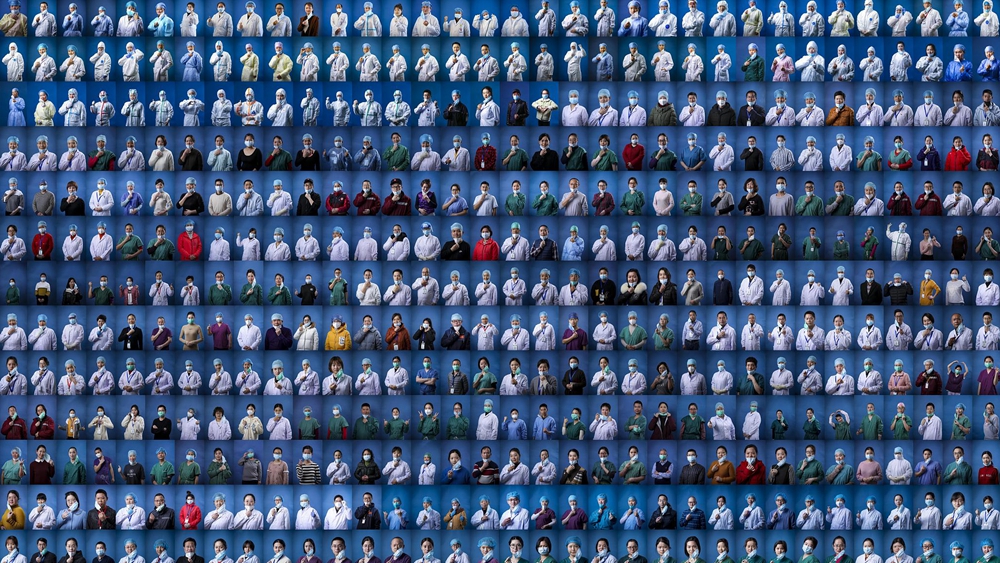
A photo showing the people who work in the front line in fighting COVID-19 in Wuhan City, central China's Hubei Province. /CFP
A photo showing the people who work in the front line in fighting COVID-19 in Wuhan City, central China's Hubei Province. /CFP
Concerted efforts to beat COVID-19
The world still suffers from the global pandemic, with more than 80 million confirmed cases and more than 1.7 million deaths worldwide as of December 28.
After the virus was first reported in central China's Wuhan City, a 76-day lockdown was imposed from January 23 to April 8. Meanwhile, China mobilized the whole nation's manpower and resources to contain the outbreak in the city.
So far, China has established a regular epidemic prevention and control system and made vaccines available.
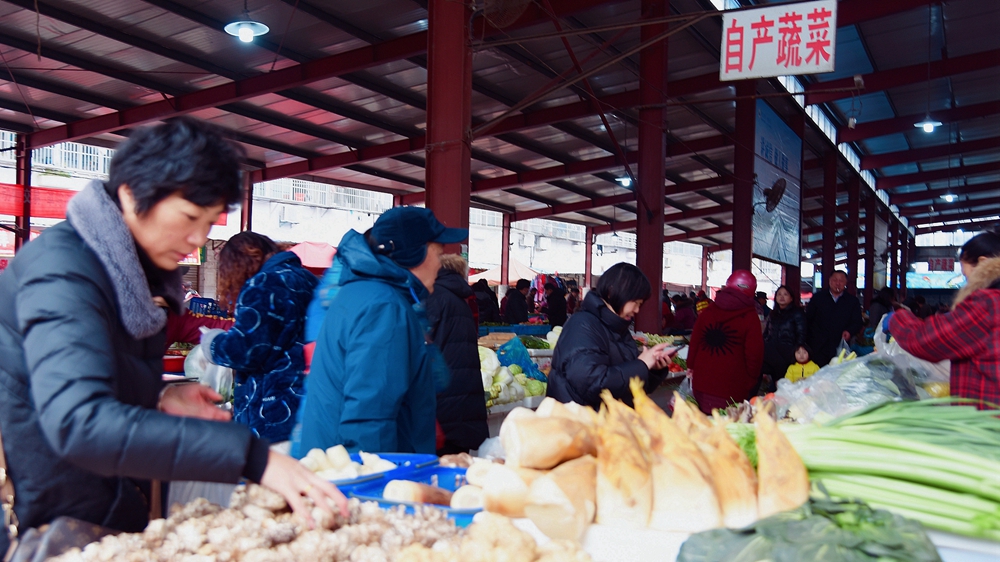
People buy vegetables at a food market in Nantong City, east China's Jiangsu Province, December 26, 2020. /CFP
People buy vegetables at a food market in Nantong City, east China's Jiangsu Province, December 26, 2020. /CFP
A new future with the 14th Five-Year Plan and the blueprint for 2035
The proposals for formulating the 14th Five-Year Plan for National Social and Economic Development (2021-2025) and Long-Range Objectives for 2035 were adopted during the fifth plenary session of the 19th Central Committee of the Communist Party of China in Beijing on October 29, 2020.
This is the first time that China has set long-term objectives for the country to achieve socialist modernization by 2035.

Women pick up chrysanthemums in Wangmo County, southwest China's Guizhou Province, October 20, 2018. /CFP
Women pick up chrysanthemums in Wangmo County, southwest China's Guizhou Province, October 20, 2018. /CFP
Eliminating absolute poverty by the end of 2020
After 66 impoverished counties in southwest China's Guizhou Province were declared to have eliminated absolute poverty on November 23, China has achieved the feat of removing all 832 counties previously listed as impoverished from the poverty list.
Chinese President Xi Jinping hailed the remarkable progress in poverty alleviation work as China has lifted a total of nearly 100 million people out of poverty at a meeting of the Standing Committee of the Political Bureau of the CPC Central Committee.
In the next five years, efforts will be made to consolidate achievements in the fight against poverty and fully promote the strategy of rural vitalization, according to the Communist Party of China Central Committee's proposed major social and economic development targets for the 14th Five-Year Plan period (2021-2025).
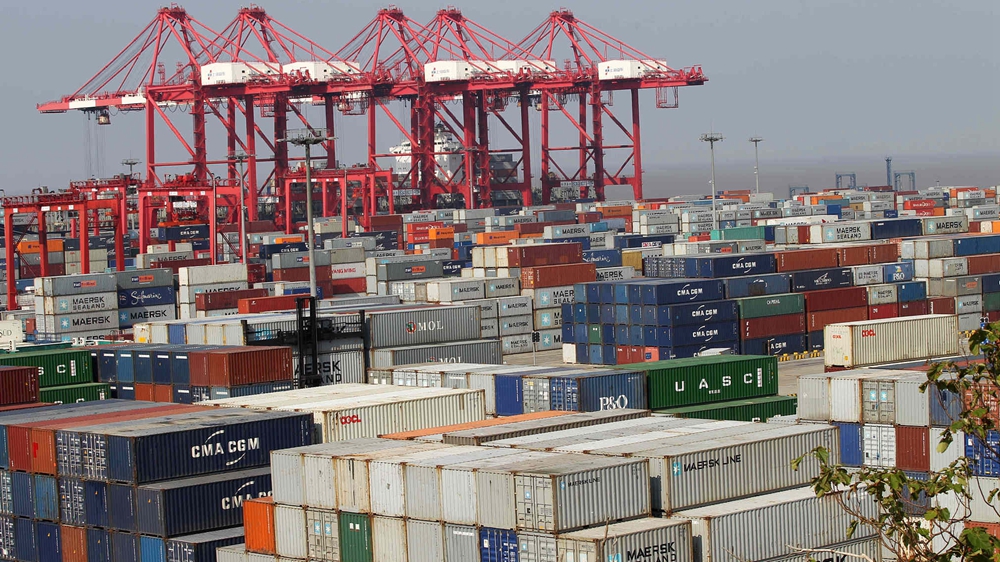
Containers pile on the fourth phase of Shanghai Yangshan Deep Water Port in Shanghai, December 8, 2020. /CFP
Containers pile on the fourth phase of Shanghai Yangshan Deep Water Port in Shanghai, December 8, 2020. /CFP
The only economy realizing a positive growth in the world in 2020
China continues to be the only economy in the world to show positive growth in 2020 as its GDP is predicted to expand 1.9 percent in 2020, according to the latest economic outlook released by the International Monetary Fund (IMF) on October 13.
The output in both advanced economies and emerging and developing economies this year are forecast to remain below 2019 levels even next year, except for China, according to the report.
A new economic pattern in China known as "dual circulation" – domestic and international, promoting each other, with domestic circulation as the main body, helps maintain quality development of China's economy.

A drone performance marks the 40th anniversary of Shenzhen Special Economic Zone in Shenzhen City, south China's Guangdong Province, August 26, 2020. /CFP
A drone performance marks the 40th anniversary of Shenzhen Special Economic Zone in Shenzhen City, south China's Guangdong Province, August 26, 2020. /CFP
Ready to embrace a higher level of opening up
The year 2020 marks the 40th anniversary of Shenzhen Special Economic Zone (SEZ) and the 30th anniversary of the Shanghai Pudong New Area. Thanks to the opening-up policy, Shenzhen SEZ has grown from a town to an international metropolitan with its economic output ranking fifth in Asian cities, and Shanghai Pudong New Area has become one of the world's most active financial trading areas.
The third China International Import Expo concluded on November 10 with tentative deals worth $72.62 billion, up 2.1 percent from the last expo.
The long-awaited Regional Comprehensive Economic Partnership (RCEP), covering nearly a third of the global population and about 30 percent of global GDP, was signed by its 15 members, including China and Japan, in Hanoi, November 15.

A young man reads the Civil Code of the People's Republic of China at a bookstore in Beijing, June 9, 2020. /CFP
A young man reads the Civil Code of the People's Republic of China at a bookstore in Beijing, June 9, 2020. /CFP
The first Civil Code since October 1, 1949
The National People's Congress passed China's first draft Civil Code on May 28.
The draft code consists of seven parts and 1,260 articles, including general provisions and sections on property, contracts, personality rights, marriage, and family, as well as inheritance and torts liability.
According to official data, a total of 1.02 million pieces of advice from around 425,000 people have been solicited during the compilation process.
The Civil Code will take effect on January 1, 2021.
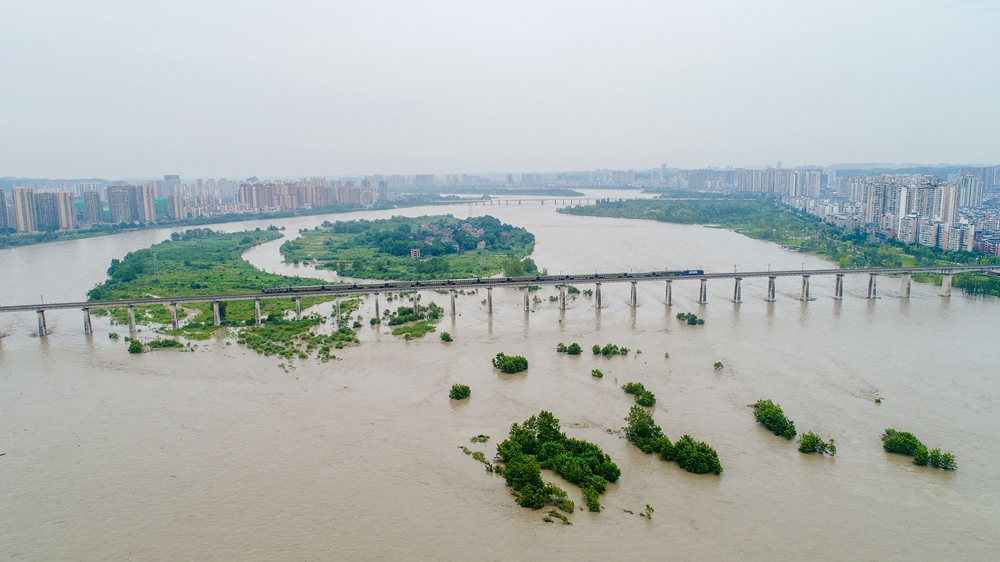
A heavy flood in Suining City, southwest China's Sichuan Province, August 12, 2020. /CFP
A heavy flood in Suining City, southwest China's Sichuan Province, August 12, 2020. /CFP
Overcoming the most severe flooding since 1998
More than 74 million people in 28 provinces in China have suffered a serious flooding disaster during this year's flooding season.
This is the most serious one since the severe flooding in 1998.
President Xi has called for all-out efforts in rescue and relief operations in flooded areas across the country and stressed that ensuring people's lives and safety is a top priority.
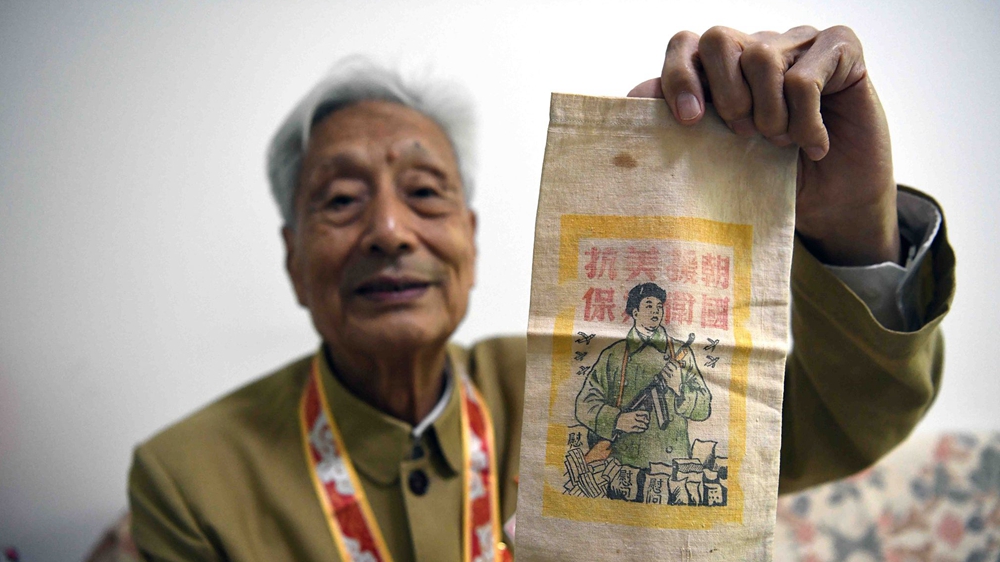
A veteran shows a bag containing candies when he took part in the War to Resist U.S. Aggression and Aid Korea, in Beijing, August 21, 2020. /CFP
A veteran shows a bag containing candies when he took part in the War to Resist U.S. Aggression and Aid Korea, in Beijing, August 21, 2020. /CFP
The 70th anniversary of China's participation in the War to Resist U.S. Aggression and Aid Korea
China held a meeting on October 23 to commemorate the 70th anniversary of the Chinese People's Volunteers (CPV) army entering the DPRK in the War to Resist U.S. Aggression and Aid Korea.
President Xi hailed the historic significance of War to Resist U.S. Aggression and Aid Korea, saying it defied the invasion and expansion of imperialism and safeguarded the security of New China.
The war also safeguarded the peaceful lives of the Chinese people, stabilized the Korean Peninsula situation, and upheld peace in Asia and the world, Xi said.

A simulated illustration of Chang'e-5 probe's orbiter-returner's separation from the ascender on the moon orbit, December 6, 2020. /China National Space Administration
A simulated illustration of Chang'e-5 probe's orbiter-returner's separation from the ascender on the moon orbit, December 6, 2020. /China National Space Administration
Major scientific and technological breakthroughs, including first Mars exploration
China has made great achievements in scientific and technological areas, including manned space flight, moon exploration, supercomputer, and quantum communication.
On May 5, China launched its newly-developed heavy-lift rocket the Long March 5B.
China successfully launched its Mars probe Tianwen-1 from south China's Hainan Province on July 23, 2020. It's China's first independent Mars mission.
China's Chang'e-5 probe came back to Earth with 1,731 grams of moon samples on December 17.
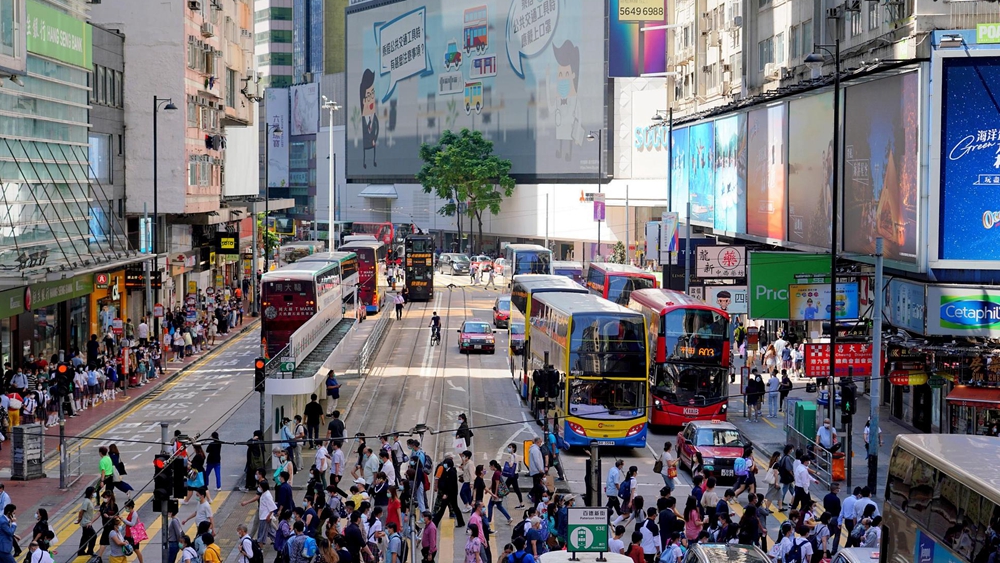
View of a street in Hong Kong Special Administrative Region, October 8, 2020. /CFP
View of a street in Hong Kong Special Administrative Region, October 8, 2020. /CFP
National Security Law for Hong Kong
Chinese lawmakers on June 30 voted unanimously to adopt national security legislation for the Hong Kong Special Administrative Region (HKSAR), a "resolute" effort taken by the central government that will make secession, subversion, and collusion with foreign forces illegal.
The national security law, which has 66 articles in six chapters, outlines the duties and government bodies of the HKSAR specifically designed to promote national security.
The law stipulates the important principles of the rule of law that the HKSAR should abide by in safeguarding national security, such as ensuring human rights protection.

